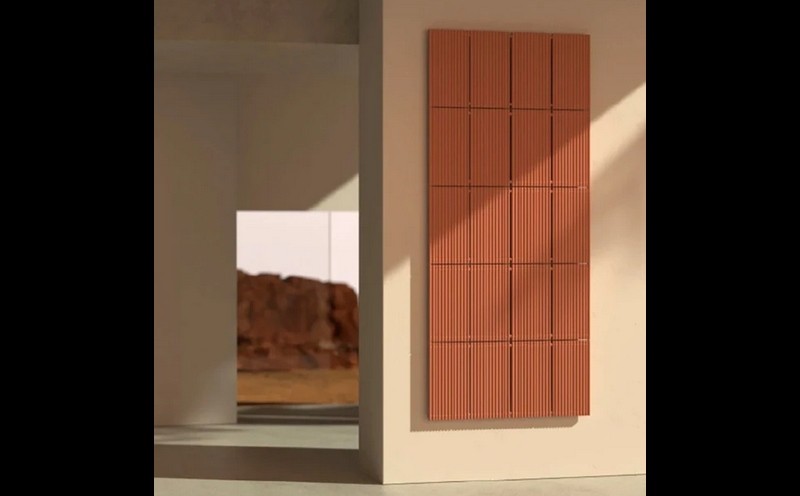
A designer has adapted ancient methods of A/C into a modern, stylish wall ornament that powerfully regulates indoor temperatures without a watt of electricity.
The Nave is a large terracotta radiator filled with cold water, inspired by the Jarrah of ancient Palestine. Pores in the terracotta release tiny amounts of water which evaporate and cool down the interior of the Nave, cooling the wall radiatively, and thus the room.
Humans have been baking in the heat of the deserts and the tropics for millennia, and long before the invention of air conditioning, engineers and architects had methods for cooling down built into their homes.
Yael Issacharov, industrial designer at the Holon Institute of Technology, says the Nave performs best in desert climates where the dry air will gestate evaporation at a faster rate. The invention won her the gold at the IDA Design Awards, and bronze at the A’Design Awards.
She says its price would be more expensive than a regular A/C unit, but along with recouping the cost through energy savings, the Nave is actually quite beautiful to look at, and frees up the use of the window.
The Jarrah of Palestine was actually used to store drinking water, as the evaporation process helped keep the water cool, as well the room it was stored in.
Other desert cultures like the ancient Persians used wind-catching towers mounted on their buildings to channel desert breezes down into the living areas of the house.
Jaali from Mughal India is another passive-cooling system built into the cultural architecture, and can be found on buildings like the Taj Mahal. A perforated slab of intricately carved marble or sandstone takes advantage of a natural law of thermodynamics that means air must speed up as it passes through small spaces.
RELATED: Architecture Built 1,000 Years Ago to Catch Rain is Being Revived to Save India’s Parched Villages
Air coming into a room through a jaali cools down as it sweeps through the small hexagonal holes, which double as humidifiers at night as the humid night air deposits moisture around the holes when it enters.
SIMILAR: Ancient Cultures May Hold the Key To Keeping Buildings Cool in a Changing Climate
Like the jaali and the windcatchers, the Nave can keep a space at a comfortable 77°F in the desert heat.
At the moment, no one has expressed commercial interest in the Nave, but Fast Company reports that Issacharov is certainly open to offers as she expands the design to be able to fit with more installation and construction methods.
SHARE This Cool Invention With Your Friends…



















